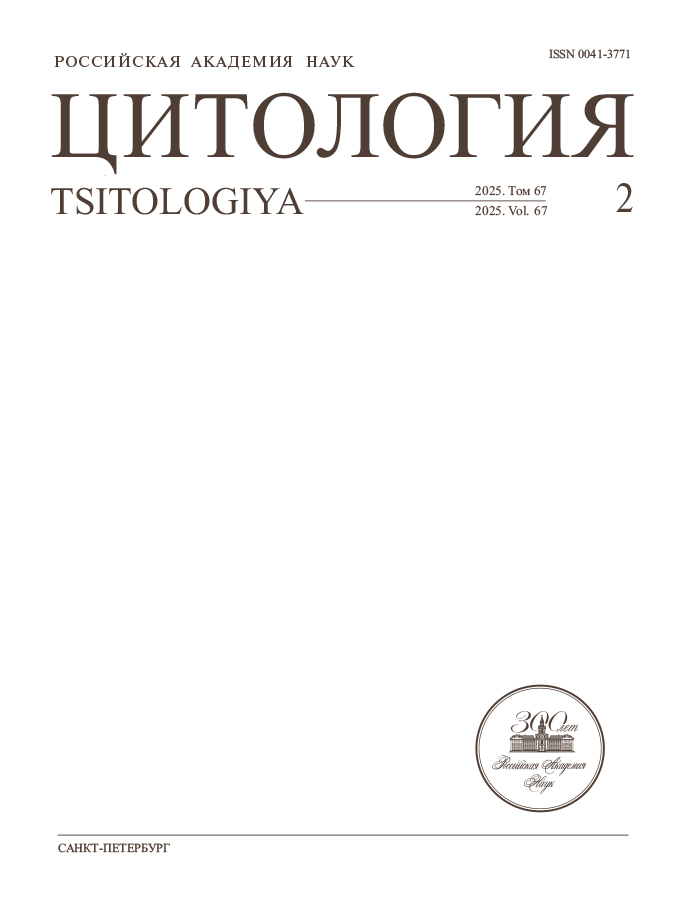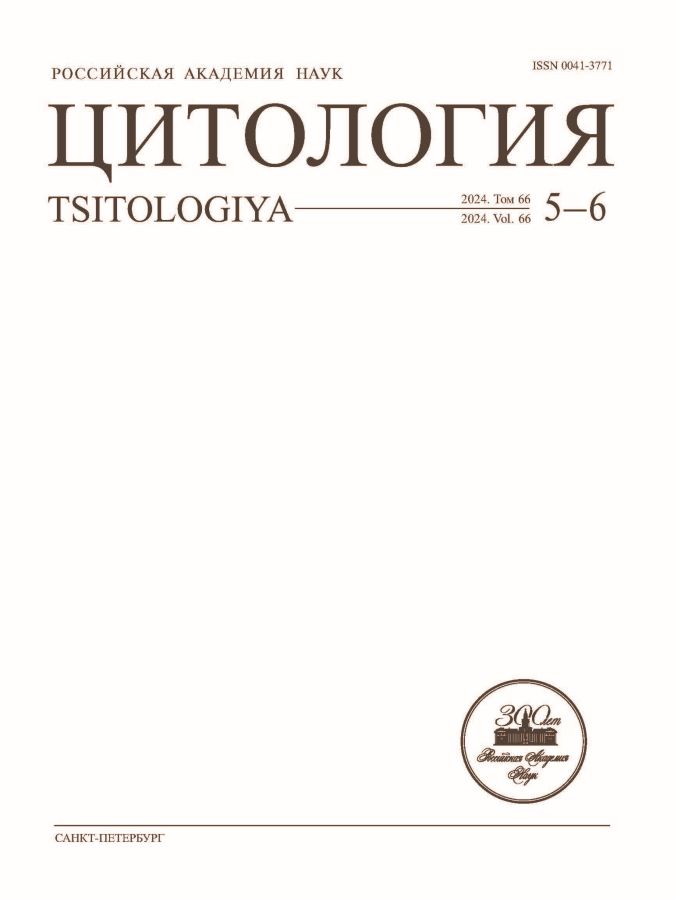Human myocardial mast cells containing chymase and their detection using various antibodies
- Authors: Beketova A.A.1, Kirik O.V.1, Korzhevsky D.E.1
-
Affiliations:
- Institute of Experimental Medicine
- Issue: Vol 66, No 5-6 (2024)
- Pages: 462-470
- Section: Articles
- URL: https://edgccjournal.org/0041-3771/article/view/677469
- DOI: https://doi.org/10.31857/S0041377124050066
- EDN: https://elibrary.ru/DUOQAR
- ID: 677469
Cite item
Abstract
In last decades, special attention has been paid to the role of mast cells in the pathogenesis of cardiovascular diseases, including sudden cardiac death. One of the components of mast cell granules is chymase. For its specific detection, various reagents for immunohistochemistry, which have different specifity, are used. This circumstance does not allow us to accurately assess the subpopulations of myocardial mast cells. The purpose of this study was to evaluate the suitability of various reagents to selective detection of myocardial mast cells and to test the hypothesis of the existence of a population of mast cells staining with alcian blue and having chymase negative reaction. Analysis of the results of the various protocols presented in this work showed that, in comparison with goat polyclonal antibodies to chymase, mouse monoclonal antibodies have greater specificity, and preliminary staining of sections with alcian blue makes it possible to neutralize the nonspecific detection of cardiomyocyte lipofuscin. In addition, all the proposed protocols make it possible to detect the morphological heterogeneity of mast cells and their granules in the human myocardium.
Keywords
Full Text
About the authors
A. A. Beketova
Institute of Experimental Medicine
Author for correspondence.
Email: beketova.anastasiya@yandex.ru
Russian Federation, Saint Petersburg, 197022
O. V. Kirik
Institute of Experimental Medicine
Email: beketova.anastasiya@yandex.ru
Russian Federation, Saint Petersburg, 197022
D. E. Korzhevsky
Institute of Experimental Medicine
Email: beketova.anastasiya@yandex.ru
Russian Federation, Saint Petersburg, 197022
References
- Атякшин Д.А., Бухвалов И.Б., Тиманн М. 2018. Протеазы тучных клеток в формировании специфического тканевого микроокружения: патогенетические и диагностические аспекты. Терапия. Т. 24. № 6. С. 128. (Atiakshin D., Buchwalow I., Tiemann M. 2018. Mast cell proteases in formation of the specific tissue microenvironment: pathogenic and diagnostic aspects. Therapy. V. 24. P. 128.) https://dx.doi.org/10.18565/therapy.2018.6.128-140
- Григорьев И.П., Коржевский Д.Э. 2021. Тучные клетки в головном мозге позвоночных – локализация и функции. Журнал эволюционной биохимии и физиологии. Т. 57. № 1. С. 17. (Grigorev I.P., Korzhevskii D.E. 2021. Mast cells in the vertebrate brain: localization and functions. J. Evol. Biochem. Physiol. V. 57. P. 17.) https://doi.org/10.31857/S0044452921010046
- Григорьев И.П., Коржевский Д.Э. 2021. Тучные клетки и нейровоспаление в патогенезе нервных и психических заболеваний. Медицинский академический журнал. Т. 21. № 2. С. 7. (Grigorev I.P., Korzhevskii D.E. 2021. Mast cells and neuroinflammation in pathogenesis of neurologic and psychiatric diseases. Medical Academic Journal. V. 21. № 2. P. 7.) https://doi.org/10.17816/MAJ63228
- Гусельникова В.В., Бекоева С.А., Коржевская В.Ф., Федорова Е.А., Коржевский Д.Э. 2015. Гистохимическая и иммуногистохимическая идентификация тучных клеток миокарда человека. Морфология. Т. 147. № 2. С. 80. (Gusel’nikova V.V., Bekoyeva S.A., Korzhevskaya V.F., Fyodorova Y.A., Korzhevskiy D.E. 2015. Histochemical and immunohistochemical identification of human myocardial mast cells. Morfologiia. V. 147. № 2. P. 80.)
- Цибулькина В.Н., Цибулькин Н.А. 2017. Тучная клетка как полифункциональный элемент иммунной системы. Аллергология и иммунология в педиатрии. Т. 49. № 2. С. 4. (Tsybulkina V.N., Tsybulkin N.A. 2017. Mast cell as poly-functional element of immune system. Allergol. Immunol. Pediatr. V. 49. № 2. P. 4.)
- Alberti S. 2017. Phase separation in biology. Cur Biol. V. 27. Art. ID R1097. https://doi.org/10.1016/j.cub.2017.08.069
- Arvan P., Castle D. 1998. Sorting and storage during secretory granule biogenesis: looking backward and looking forward. Biochem J. V. 332. P. 593. https://doi.org/10.1042/bj3320593
- Atiakshin D., Patsap O., Kostin A., Mikhalyova L., Buchwalow I., Tiemann M. 2023. Mast cell tryptase and carboxypeptidase A3 in the formation of ovarian endometrioid cysts. Int. J. Mol. Sci. V. 24: 6498. https://doi.org/10.3390/ijms24076498
- Braga T., Grujic M., Lukinius A., Hellman L., Abrink M., Pejler G. 2007. Serglycin proteoglycan is required for secretory granule integrity in mucosal mast cells. Biochemical J. V. 403. P. 49. https://doi.org/10.1042/BJ20061257
- Blank U. 2011. The mechanisms of exocytosis in mast cells. Adv. Exp. Med. Biol. V. 716. P. 107. https://doi.org/10.1007/978-1-4419-9533-9_7
- Crivellato E., Nico B., Mallardi F., Beltrami C. A., Ribatti D. 2003. Piecemeal degranulation as a general secretory mechanism? Anat. Rec. Part A. V. 274. P. 778. https://doi.org/10.1002/ar.a.10095
- Grigorev I.P., Korzhevskii D.E. 2021. Modern imaging technologies of mast cells for diology and medicine (Review). Sovrem. Tekhnologii Med. V. 13. P. 93. https://doi.org/10.17691/stm2021.13.4.10
- Hammel I., Lagunoff D., Galli S.J. 2010. Regulation of secretory granule size by the precise generation and fusion of unit granules. J. Cell. Mol. Med. V. 14. P. 1904. https://doi.org/10.1111/j.1582-4934.2010.01071.x
- Irani A.A., Schechter N.M., Craig S.S., DeBlois G., Schwartz L.B. 1986. Two types of human mast cells that have distinct neutral protease compositions. Proc. Natl. Acad. Sci. U.S.A. V. 83. P. 4464. https://doi.org/10.1073/pnas.83.12.4464
- Irani A.M., Bradford T.R., Kepley C.L., Schechter N.M., Schwartz L.B. 1989. Detection of MCT and MCTC types of human mast cells by immunohistochemistry using new monoclonal anti-tryptase and anti-chymase antibodies. J. Histochem. Cytochem. V. 37. P. 1509. https://doi.org/10.1177/37.10.2674273
- Jin J., Jiang Y., Chakrabarti S., Su Z. 2022. Cardiac mast cells: a two-head regulator in cardiac homeostasis and pathogenesis following injury. Front. Immunol. V. 13. Art. ID 963444. https://doi.org/10.3389/fimmu.2022.963444
- Juliano G.R., Skaf M.F., Ramalho L.S., Juliano G.R., Torquato B.G.S., Oliveira M.S., Oliveira F.A., Espíndula A.P., Cavellani C.L., Teixeira V.P.A., Ferraz M.L.D.F. 2020. Analysis of mast cells and myocardial fibrosis in autopsied patients with hypertensive heart disease. Revista Portuguesa de Cardiologia. V. 39. P. 89. https://doi.org/10.1016/j.repc.2019.11.003
- KleinJan A., Godthelp T., Blom H.M., Fokkens W.J. 1996. Fixation with Carnoy’s fluid reduces the number of chymase-positive mast cells: not all chymase-positive mast cells are also positive for tryptase. Allergy. V. 51. P. 614. https://doi.org/10.1111/j.1398-9995.1996.tb04681.x
- Kologrivova I., Shtatolkina M., Suslova T., Ryabov V. 2021. Cells of the immune system in cardiac remodeling: Main players in resolution of inflammation and repair after myocardial infarction. Front. Immunol. V. 12: 664457. https://doi.org/10.3389/fimmu.2021.664457
- Levick S.P., Widiapradja A. 2018. Mast cells: Key contributors to cardiac fibrosis. Int. J. Mol. Sci. V. 19: 231. https://doi.org/10.3390/ijms19010231
- Mackins C.J., Kano S., Seyedi N., Schäfer U., Reid A.C., Machida T., Silver R.B., Levi R. 2006. Cardiac mast cell-derived renin promotes local angiotensin formation, norepinephrine release, and arrhythmias in ischemia/reperfusion. J. Clin. Inv. V. 116. P. 1063. https://doi.org/10.1172/JCI25713
- Mulloy B., Lever R., Page C.P. 2017. Mast cell glycosaminoglycans. Glycoconj J. V. 34. P. 351. https://doi.org/10.1007/s10719-016-9749-0
- Reid A.C., Brazin J.A., Morrey C., Silver R.B., Levi R. 2011. Targeting cardiac mast cells: pharmacological modulation of the local renin-angiotensin system. Curr. Pharm. Des. V. 17. P. 3744. https://doi.org/10.2174/138161211798357908
- Sperr W.R., Bankl H.C., Mundigler G., Klappacher G., Grossschmidt K., Agis H., Simon P., Laufer P., Imhof M., Radaszkiewicz T., Glogar D., Lechner K., Valent P. 1994. The human cardiac mast cell: localization, isolation, phenotype, and functional characterization. Blood. V. 84. P. 3876.
- Theoharides T.C., Twahir A., Kempuraj D. 2023. Mast cells in the autonomic nervous system and potential role in disorders with dysautonomia and neuroinflammation. Ann. Allergy, Asthma, Immunol. V. 132. P. 440. https://doi.org/10.1016/j.anai.2023.10.032
- Urata H., Boehm K.D., Philip A., Kinoshita A., Gabrovsek J., Bumpus F.M., Husain A. 1993. Cellular localization and regional distribution of an angiotensin II-forming chymase in the heart. J. Clin. Inv. V. 91. P. 1269. https://doi.org/10.1172/JCI116325
- Weidner N., Austen K.F. 1993. Heterogeneity of mast cells at multiple body sites. Fluorescent determination of avidin binding and immunofluorescent determination of chymase, tryptase, and carboxypeptidase content. Pathol. Res. Pract. V. 189. P. 156. https://doi.org/10.1016/S0344-0338(11)80086-5
- Wernersson S., Pejler G. 2014. Mast cell secretory granules: armed for battle. Nat. Rev. Immunol. V. 14. P. 478. https://doi.org/10.1038/nri3690
- Von Zastrow M., Castle A.M., Castle J.D. 1989. Ammonium chloride alters secretory protein sorting within the maturing exocrine storage compartment. J. Biol. Chem. V. 264. P. 6566.
Supplementary files













